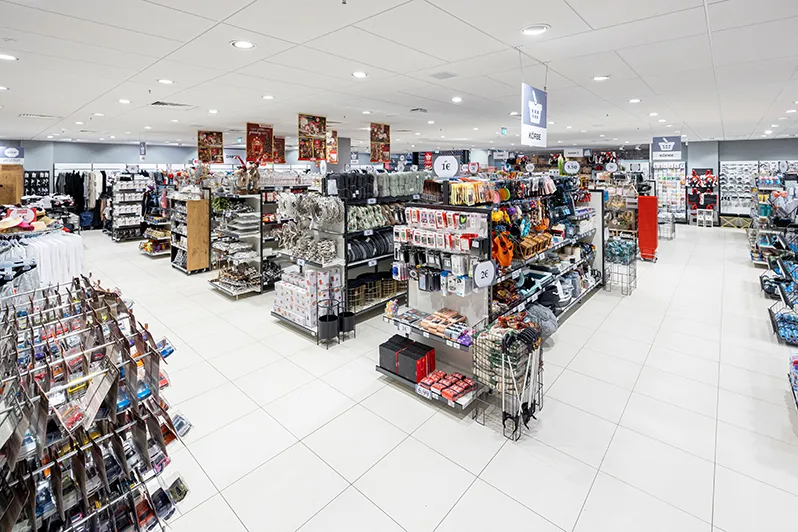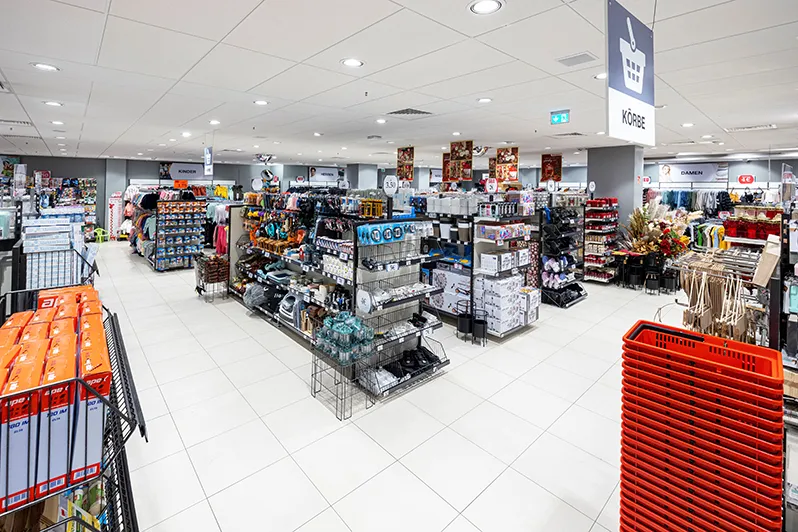The Woolworths Museum
Expansion Plans Update 2024

 Superstar Woolworth GmbH CEO Roman Heini took the helm of the "Home of Discount" after making his name at Aldi UK as its joint MD during its most rapid expansion across the British Isles. It was a disrupter that established a market-leading supermarket despite every obstacle the established retailers tried to thow in the German grocer's way. He went on to serve Aldi in the USA, before looking around for a way to return to his native Germany. Under his leadership Woolworth's sales and profit growth has increased rapidly as it has gone from strength-to-strength.
Superstar Woolworth GmbH CEO Roman Heini took the helm of the "Home of Discount" after making his name at Aldi UK as its joint MD during its most rapid expansion across the British Isles. It was a disrupter that established a market-leading supermarket despite every obstacle the established retailers tried to thow in the German grocer's way. He went on to serve Aldi in the USA, before looking around for a way to return to his native Germany. Under his leadership Woolworth's sales and profit growth has increased rapidly as it has gone from strength-to-strength.
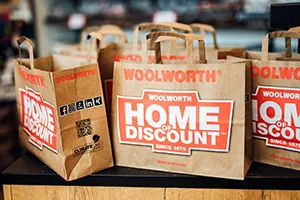 Heini recently gave an interview to Retai Week, the London-based market-leading journal about the European retail trade. Unusually, rather than concentrating on recent events, scheduled store openings or the next season's ranges, he shared his vision or "pipe dream" of how he sees the brand developing in Europe in the medium to long-term. It caught the imagination of the British popular press, with most national newspapers picking up the story and giving it a column or two, creating a buzz on social media and, according to Google, more than 2,000 visits and searches to find out more about Woolworth Germany here in the Museum !
Heini recently gave an interview to Retai Week, the London-based market-leading journal about the European retail trade. Unusually, rather than concentrating on recent events, scheduled store openings or the next season's ranges, he shared his vision or "pipe dream" of how he sees the brand developing in Europe in the medium to long-term. It caught the imagination of the British popular press, with most national newspapers picking up the story and giving it a column or two, creating a buzz on social media and, according to Google, more than 2,000 visits and searches to find out more about Woolworth Germany here in the Museum !
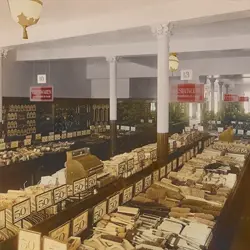 When the first German Woolworth opened in July 1927, the Weimar Republic's economy was struggling with the punitive reparations imposed by the victorious powers in the great war, prompting the firm's Directors to focus its range on practical items for the home and kitchen, all at fixed, jaw-drop prices, rather than majoring its more luxurious decorative items and toys. From the outset the formula was a big hit with the public, and a major concern for rival retailers, as Woolworth opened more branches as quickly as it could. With copycat chains compounding the problem, by 1933 the Reichstag and Government had passed laws prohibiting any more fixed price store openings, backed by National Socialist propaganda reminding consumers to buy only from German shops.
When the first German Woolworth opened in July 1927, the Weimar Republic's economy was struggling with the punitive reparations imposed by the victorious powers in the great war, prompting the firm's Directors to focus its range on practical items for the home and kitchen, all at fixed, jaw-drop prices, rather than majoring its more luxurious decorative items and toys. From the outset the formula was a big hit with the public, and a major concern for rival retailers, as Woolworth opened more branches as quickly as it could. With copycat chains compounding the problem, by 1933 the Reichstag and Government had passed laws prohibiting any more fixed price store openings, backed by National Socialist propaganda reminding consumers to buy only from German shops.
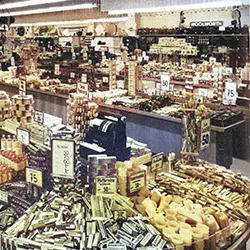 By 1945 the great majority of German stores had been destrroyed or seriously damaged by enemy bombardment, with many forced to close and others cobbling together temporary premises out of any porperty still standing. It fell to MD Rudolph Jahn to try to maintain morale throughout the War, and to get the chain back up and running again when Germany finally surrendered, encouraged by the occupying Americans. The new stores were very different from the branches opened between 1927 and 1933. They were larger, brighter and more modern, with tiered counters and a range about four times larger, with no fixed prices in a department store format. Woolworth built a strong market share for fashions for all the family, using its buying power and worldwide supply chain to get up and running much more quickly than most competitors.
By 1945 the great majority of German stores had been destrroyed or seriously damaged by enemy bombardment, with many forced to close and others cobbling together temporary premises out of any porperty still standing. It fell to MD Rudolph Jahn to try to maintain morale throughout the War, and to get the chain back up and running again when Germany finally surrendered, encouraged by the occupying Americans. The new stores were very different from the branches opened between 1927 and 1933. They were larger, brighter and more modern, with tiered counters and a range about four times larger, with no fixed prices in a department store format. Woolworth built a strong market share for fashions for all the family, using its buying power and worldwide supply chain to get up and running much more quickly than most competitors.
By 1959 the chain was contributing $2m profit each year back to New York with virtually every store bright, new and modern. President Robert C. Kirkwood's new strategy for the parent company was partly inspired by the success of his German subsidiary. which he considered the role model at offering good value on items at much higher price points than in earlier times, and proving that the company could be a market leader for fashions. It is said that this partly inspired his decision to acquire the manufacturing retailers Richman Brothers and Anderson-Little in the Sixties and to develop giant out-of-town Woolco superstores with a substantial fashion offer. Seeing the success of the new, up-to-date premises in Germany, he also triggered a major drive away from Main Streets in the USA into new, much larger,self-service premises in Shopping Malls. The US company continued to move itself and its subsidiaries up-market through until 1997. After the MBO the newly independent company went on to dilute its value proposition further adding new, tiny convenience-oriented stores in smaller towns.
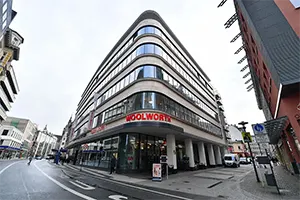 Roman Heini started his January 2024 interview with Retail Week with an overview of the Company's progress since its relaunch in 2010. At the low point after going into administration only 115 of the original stores had survived. Some of the others had already been sold to other retailers, others were less well suited to the new owner's vision for the business - moving to a much smaller range of mainly own label and made to the company's specification, and sold in bulk at rock bottom prices - the formula pioneered by Frank Winfield Woolworth in 1879 which had quickly established him as a merchant prince and the world's most successful retailer.
Roman Heini started his January 2024 interview with Retail Week with an overview of the Company's progress since its relaunch in 2010. At the low point after going into administration only 115 of the original stores had survived. Some of the others had already been sold to other retailers, others were less well suited to the new owner's vision for the business - moving to a much smaller range of mainly own label and made to the company's specification, and sold in bulk at rock bottom prices - the formula pioneered by Frank Winfield Woolworth in 1879 which had quickly established him as a merchant prince and the world's most successful retailer.
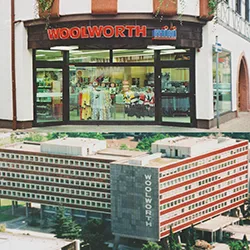 The new owners, H.H. Group a division of the family-owned Tengelmann Group, needed to make the buying and supply chain operations more efficient to run at the lowest possible cost, forcing them to take difficult decisions, including the closure of the huge administration centre in Frankfurt, which had been the brainchild of the American parent company back in the 1970s and was engineered for a much larger and more complex range and a more hierarchical and bureaucratic multi-layered management structure than most retailers can afford in modern times. Initially the new owner used its existing buying force and some stock it already had to get the stores back open as it set to work establishing a new company culture, ways of working and an organisation structure.
The new owners, H.H. Group a division of the family-owned Tengelmann Group, needed to make the buying and supply chain operations more efficient to run at the lowest possible cost, forcing them to take difficult decisions, including the closure of the huge administration centre in Frankfurt, which had been the brainchild of the American parent company back in the 1970s and was engineered for a much larger and more complex range and a more hierarchical and bureaucratic multi-layered management structure than most retailers can afford in modern times. Initially the new owner used its existing buying force and some stock it already had to get the stores back open as it set to work establishing a new company culture, ways of working and an organisation structure.
Over time it is developed a scheme to train its own store staff and management to make it self-sustainable and to build teams of buying, logistics, finance, marketing and IT professionals for a new, state-of-the-art, environmentally friendly distribution and administration hub in Formerstraße 6, 59425, Unna-Alte Herde, North-Rhine Westphalia.
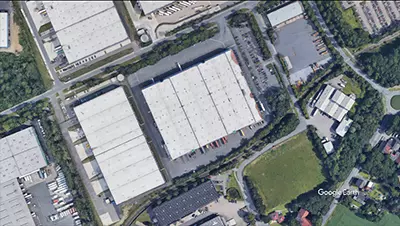 Careful planning has shaped an environmentally sustainable plant, with room to grow, Space can be 'flexed up' to add seating or supply capacity. With a railway behind it could even add a railhead, should that emerge as the 'green' replacement to today's freight transport. Founded 12 years before Woolworth, 157-year-old Tengelmann has learnt to leverage the advantage of being a family business, taking a longer-term perspective on investments for profit generation than this-year-focused institutional investors allow today's listed businesses.
Careful planning has shaped an environmentally sustainable plant, with room to grow, Space can be 'flexed up' to add seating or supply capacity. With a railway behind it could even add a railhead, should that emerge as the 'green' replacement to today's freight transport. Founded 12 years before Woolworth, 157-year-old Tengelmann has learnt to leverage the advantage of being a family business, taking a longer-term perspective on investments for profit generation than this-year-focused institutional investors allow today's listed businesses.
Roman Heini told Retail Week the chain had grown to 620 stores in Germany (which has since risen to 630) with around twenty more in the embryonic new consolidated subsidiaries in neighbouring Austria and Poland, which had exceeded expectations. In other words the chain was more than five times larger than when it first came out of Administration, with almost twice the peak number of stores traded either under American ownership or as a Management Buy Out. Far from believing that Germany had reached full capacity, he plans to open around fifty stores a year in the home country, believing that in the medium to long term it can sustain up to 2,000 Woolworth stores. If the current turnover per branch is maintained, indicatively the turnover at home could reach €4 billion by the time the plan is complete.
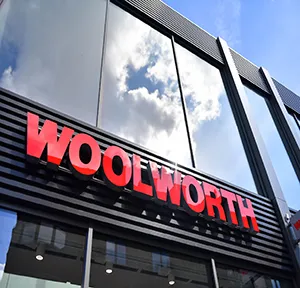 Looking wider afield, Heini added that Europe more generally was ready for Woolworth and overall the Continent could sustain as many as 5,000 stores, which was his goal for the medium-to-long term. As in Austria and Poland he is expected to take a "softly, softly" approach, establishing a subsidiary company in a country and opening test stores to gauge public reaction and, where necessary, adapt the formula or marketing messages before determining the speed of roll out. Most outside observers were unaware that for historic reasons, while the German company owned the rights to trade in some parts of Europe, other countries had been assigned to Woolworth UK when it was founded in 1909. Heini was pleased to report that, after revisiting negotiations with lawyers acting for Very Group plc and the estate of the late Sir David Barclay, he had acquired the remaining European rights for an undisclosed sum.
Looking wider afield, Heini added that Europe more generally was ready for Woolworth and overall the Continent could sustain as many as 5,000 stores, which was his goal for the medium-to-long term. As in Austria and Poland he is expected to take a "softly, softly" approach, establishing a subsidiary company in a country and opening test stores to gauge public reaction and, where necessary, adapt the formula or marketing messages before determining the speed of roll out. Most outside observers were unaware that for historic reasons, while the German company owned the rights to trade in some parts of Europe, other countries had been assigned to Woolworth UK when it was founded in 1909. Heini was pleased to report that, after revisiting negotiations with lawyers acting for Very Group plc and the estate of the late Sir David Barclay, he had acquired the remaining European rights for an undisclosed sum.
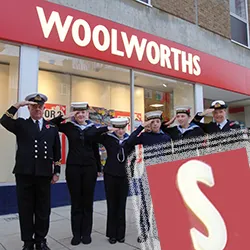 Journalists' appetites were whetted by the final part of Heini's interview, generating a frenzy of column-inches in red-top and broadsheet papers alike. The CEO noted that the brand is still very fondly remembered in the UK, he shared his "pipe dream" to get the stores back open, even perhaps with Kingfisher's 'S' suffix from 1987. The papers noted that it's a market he knows very well indeed, and were univeral in their approval for the idea. If his European plans already include the Republic of Ireland, it could finally see Woolworth restored far beyond its former glory on this side of the Atlantic. That would just leave North America, a Continent that Heini learnt a lot about at the end of his Aldi career! The Woolworths Museum wishes Roman and his team every success in turning a shared dream to reality.
Journalists' appetites were whetted by the final part of Heini's interview, generating a frenzy of column-inches in red-top and broadsheet papers alike. The CEO noted that the brand is still very fondly remembered in the UK, he shared his "pipe dream" to get the stores back open, even perhaps with Kingfisher's 'S' suffix from 1987. The papers noted that it's a market he knows very well indeed, and were univeral in their approval for the idea. If his European plans already include the Republic of Ireland, it could finally see Woolworth restored far beyond its former glory on this side of the Atlantic. That would just leave North America, a Continent that Heini learnt a lot about at the end of his Aldi career! The Woolworths Museum wishes Roman and his team every success in turning a shared dream to reality.
